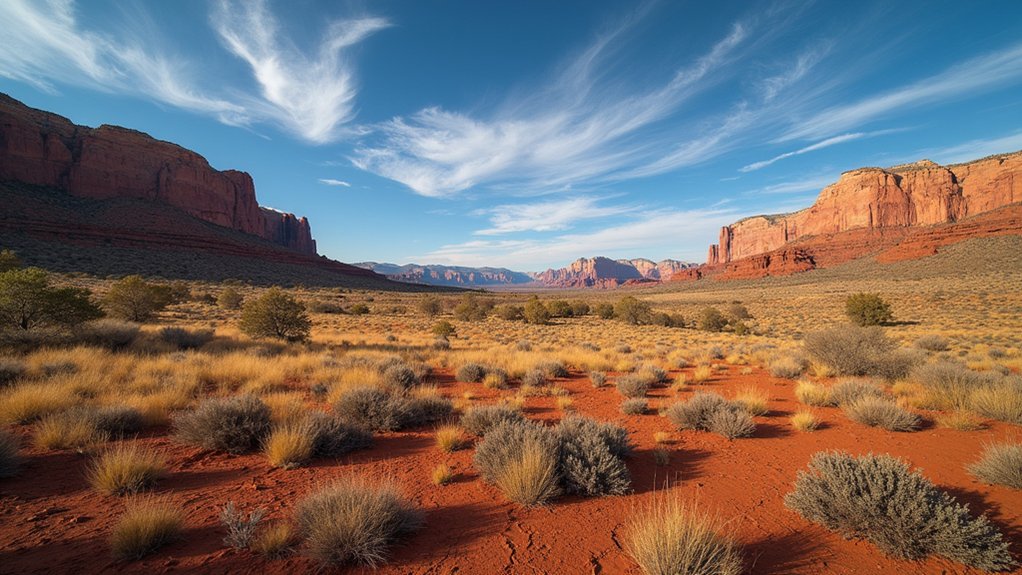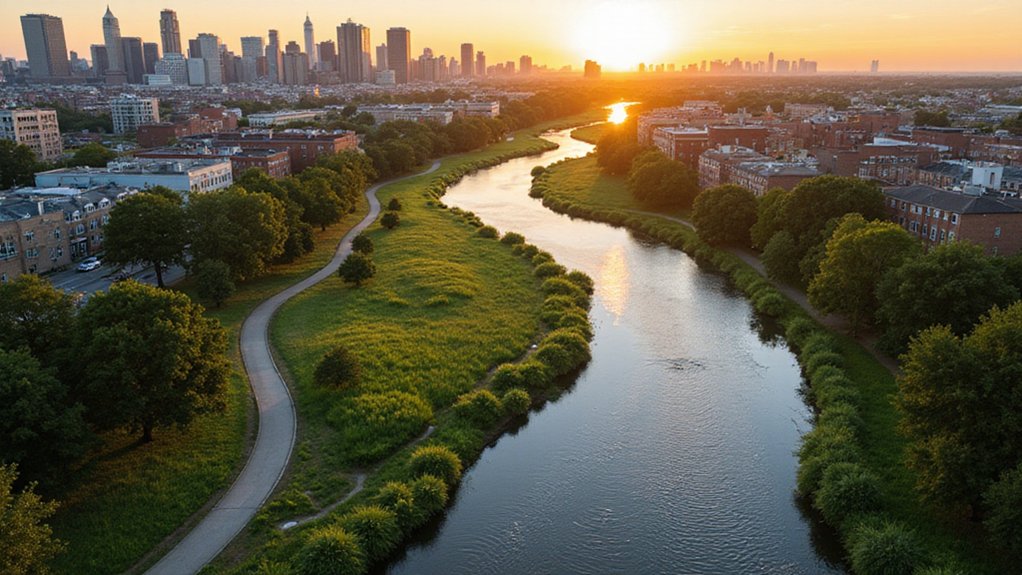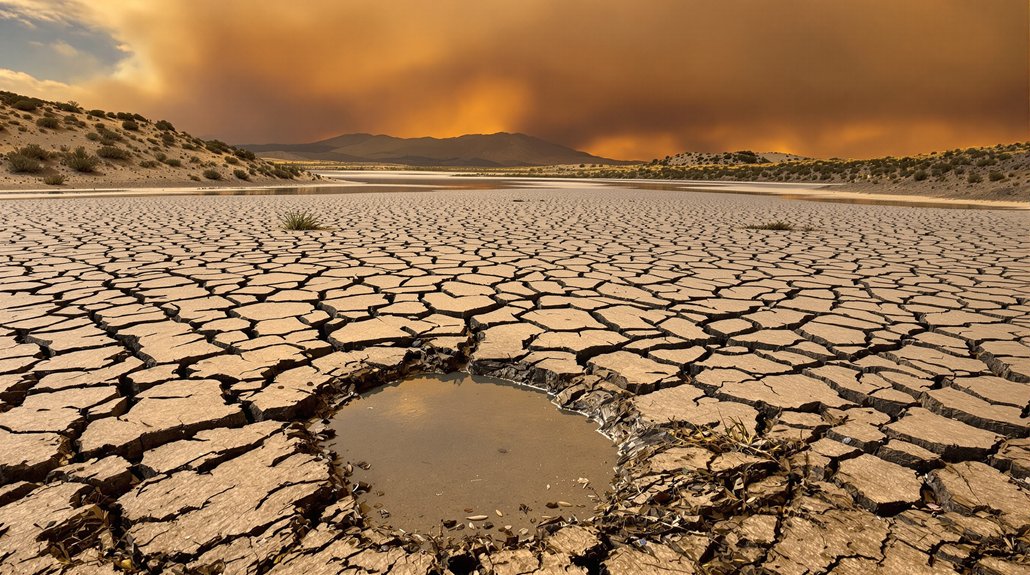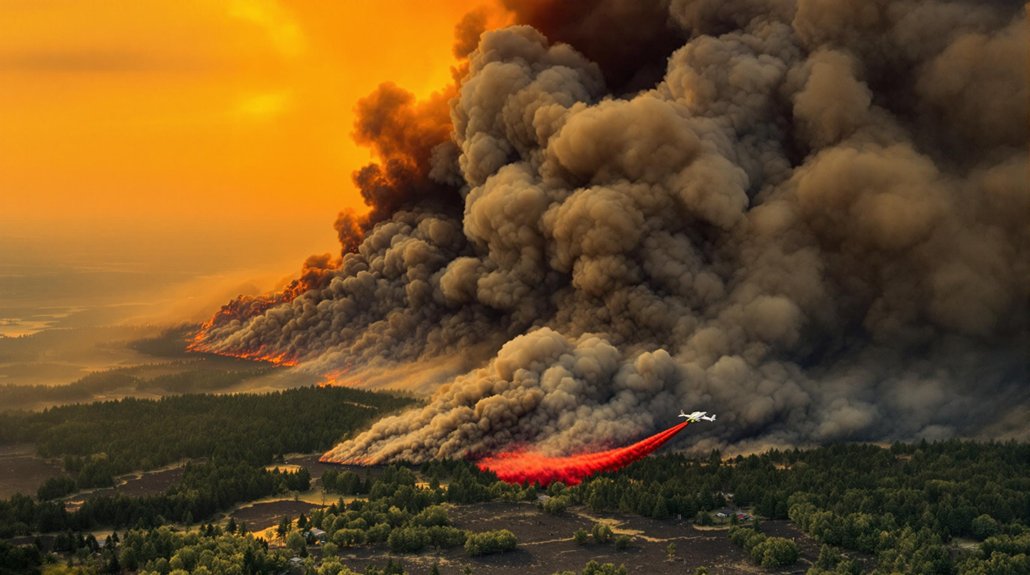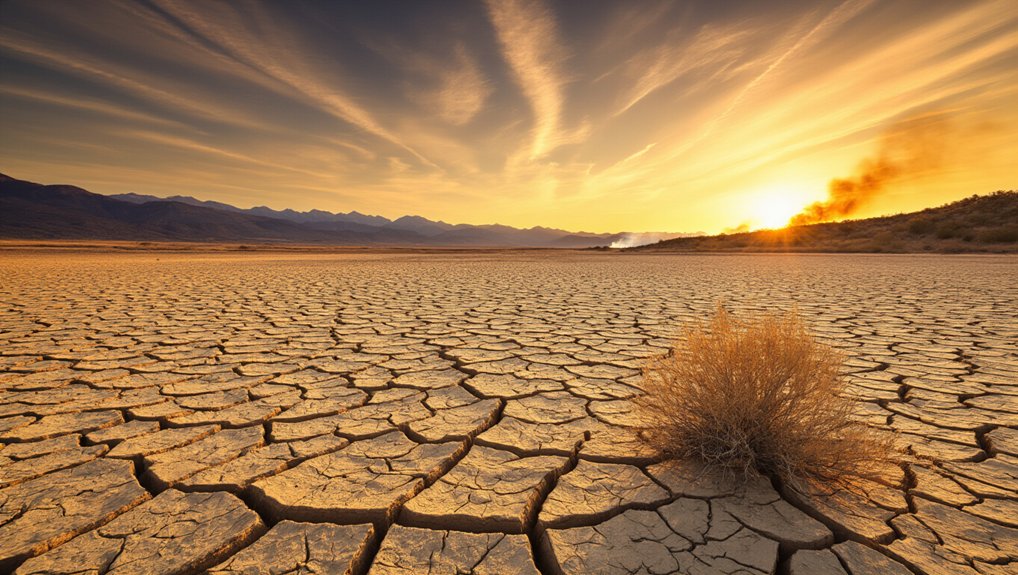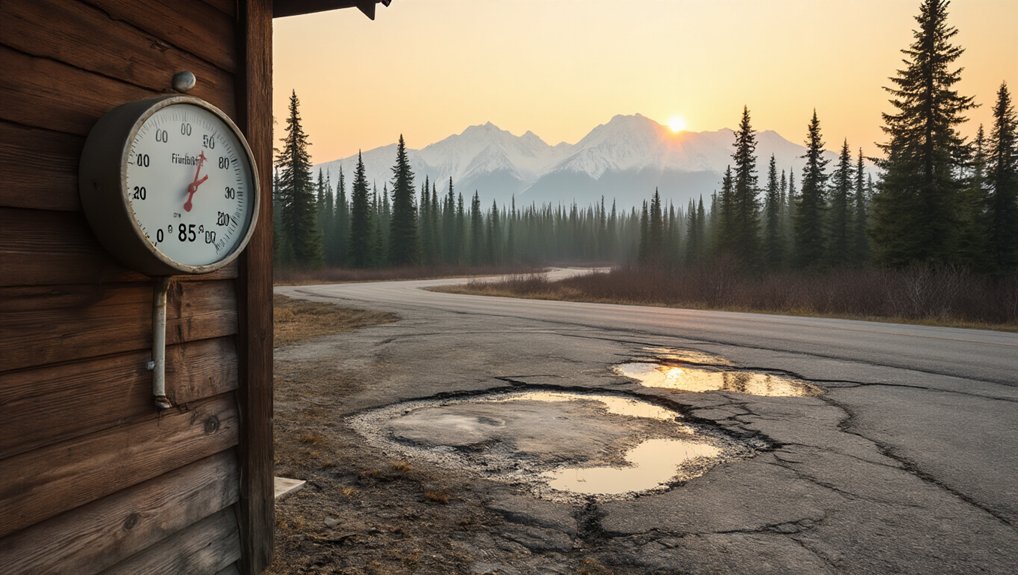Utah’s 2025 fire season is expected to be more active than in recent years. Despite average snowpack levels in northern Utah, officials are concerned about increased wildfire risks in the coming months. Over 40% of the state, particularly central and southern regions, remains in severe or extreme drought conditions.
Utah faces an elevated fire threat in 2025 as drought grips 40% of the state despite normal northern snowpack.
The National Interagency Fire Center has specifically identified southern Utah as a primary concern for 2025. This region received near-record-low snowpack, which has worsened drought conditions and left soil moisture at dangerously low levels. When soils are this dry, vegetation becomes more flammable and creates perfect conditions for fire spread.
Already this year, 157 wildfires have burned 1,086 acres across Utah. Fire danger maps show significant risk throughout the state for the next three months. The typical fire season in Utah begins in mid-May and lasts about 20 weeks, with activity increasing through July and often peaking into October.
Human activity continues to be a leading cause of wildfire ignitions statewide. State agencies are focusing on public education to reduce accidental fires, especially as drought conditions and increased recreation create higher risks for inadvertent fire starts. An alarming 86% of fires this year have been human-caused wildfires.
Northern Utah’s average snowpack has temporarily eased drought in some areas. The later snowmelt there helps maintain soil moisture, potentially shortening the fire season in those regions. However, as summer progresses and surfaces dry out, fire risk will increase even in northern areas.
State, local, and federal agencies are coordinating their efforts and ramping up preparations. Emergency responders have updated their response plans based on the projected risks. The amount of available fuel, including dead leaves, brush, and grasses, is particularly concerning in central and southern Utah where drought has persisted. Recent data from Global Forest Watch indicates that Utah has experienced significant forest cover loss in vulnerable regions, further increasing wildfire susceptibility.
Fire crews are carefully monitoring fuel moisture levels throughout the state and will deploy resources to high-risk areas as conditions change. Public information campaigns are underway to keep residents informed about the evolving wildfire threats.
References
- https://www.deseret.com/utah/2025/05/21/why-utahs-fire-season-this-year-could-be-busier/
- https://utah-fire-info-utahdnr.hub.arcgis.com
- https://naturalresources.utah.gov/dnr-newsfeed/media-advisory-state-federal-fire-officials-present-plans-anticipated-high-wildfire-season/
- https://www.globalforestwatch.org/dashboards/country/USA/45?category=fires
- https://www.kuer.org/science-environment/2025-04-12/southern-utahs-dry-winter-could-make-for-a-long-wildfire-season
